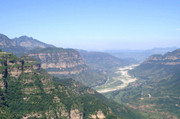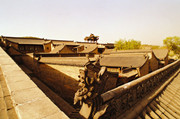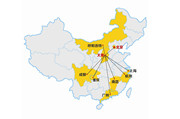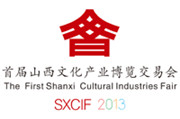Pingyao beef supports industrial chain
By Zhou Yuanyuan ( chinadaily.com.cn )
Updated: 2013-11-07
The Pingyao Beef Group, owners of a time-honored brand, is perfecting its industrial chain and benefitting farmers by breaking with the tradition and following its own course in restructuring and developing agriculture, through processing and building bases to give farmers a greater role. It has a breeding base and fattening farm for thousands of cattle, a slaughterhouse for 30,000 cattle, and a beef- production line with an annual output up to 20,000 tons.
During the 12th Five-year Plan period (2011 - 2015), the group has turned a new leaf, joining Shanxi Agricultural University in investing 50 million yuan ($8.2 billion) in the modern Guanyun cattle base, in the village of Youfangbao, on 93,000-square-meters of land. The head of the operation explained that they have introduced more than 1,000 top-quality cattle and expect to get 1,000 farmers involved in planting and breeding.
The base, which went into operation in 2012, has had a positive with, for example, the Wangshun cooperative, which has ties to the company and which is building a feeding farm with an annual supply of 9,000 head of cattle. It has other cooperative plans with the villages of Jinhua and Nanbao that can benefit 20,000 farmers.
The company's micro-marketing strategy calls for marketing Guanyun beef across the country via a Shanxi Brand China Tour. It is a provincial and national leader in agricultural industrialization and is looking for new ideas to extend the industrial chain to include cultural tourism, and by building a beef museum. Last year it saw 500 million yuan in sales and its goal is to raise the figure to 1 billion yuan by the end of the 12th Five-Year Plan, and make it China’s No.1 beef brand.
One Australian cattle–dealer, who visited the group on Oct 17, got a look at the entire operation, from forage grass, to cattle breeding and cattle fattening, to slaughtering and processing, to marketing and cultural tourism, spoke highly of this complete industrial chain.
Edited by Roger Bradshaw




